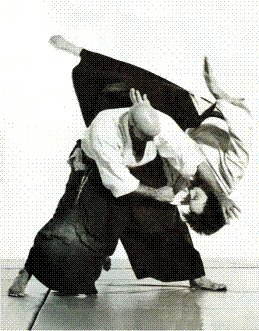Iaido in Iwama
“I was uchideshi this year again for one month (tooooo short) and had the opportunity to learn Battojutsu directly from [Hitohiro Saito] Sensei. First, Sensei handed us the Iaito (the Tanrenkan has several) and told me, as the highest grade present, to practice suburi, and kumitachi. Since I did not know anything about it, I had to depend on Kasper (an excellent long time sotodeshi), and another day on Yasuhiro Saito, to teach me the Sekiguchi Ryu. About a week later, Sensei taught us directly with many details. It was a wonderful class. Sekiguchi Ryu is a ryu originally from Wakayama (O’Sensei’s country). It is a vigorous style with lots of kiai. We also practiced with live blades using some excellent swords that Sensei has.
One site where you can have a look at this Battojutsu style is bushinjuku.com.
It seems that Sensei has had a long connection with this style.”
Tristão da Cunha Sensei from Portugal.
Click here to view forum thread in Aikidojournal.

 The Art of Aiki es la más completa fuente de información sobre el Aikido en Español. |
The Art of Aiki es la más completa fuente de información sobre el Aikido en Español. |